circFL-seq reveals full-length circular RNAs with rolling circular reverse transcription and nanopore sequencing
- PMID: 34647522
- PMCID: PMC8550772
- DOI: 10.7554/eLife.69457
circFL-seq reveals full-length circular RNAs with rolling circular reverse transcription and nanopore sequencing
Abstract
Circular RNAs (circRNAs) act through multiple mechanisms via their sequence features to fine-tune gene expression networks. Due to overlapping sequences with linear cognates, identifying internal sequences of circRNAs remains a challenge, which hinders a comprehensive understanding of circRNA functions and mechanisms. Here, based on rolling circular reverse transcription and nanopore sequencing, we developed circFL-seq, a full-length circRNA sequencing method, to profile circRNA at the isoform level. With a customized computational pipeline to directly identify full-length sequences from rolling circular reads, we reconstructed 77,606 high-quality circRNAs from seven human cell lines and two human tissues. circFL-seq benefits from rolling circles and long-read sequencing, and the results showed more than tenfold enrichment of circRNA reads and advantages for both detection and quantification at the isoform level compared to those for short-read RNA sequencing. The concordance of the RT-qPCR and circFL-seq results for the identification of differential alternative splicing suggested wide application prospects for functional studies of internal variants in circRNAs. Moreover, the detection of fusion circRNAs at the omics scale may further expand the application of circFL-seq. Taken together, the accurate identification and quantification of full-length circRNAs make circFL-seq a potential tool for large-scale screening of functional circRNAs.
Keywords: chromosomes; circular RNA; computational biology; full-length sequencing; fusion circRNA; gene expression; human; nanopore sequencing; systems biology.
© 2021, Liu et al.
Conflict of interest statement
ZL, CT, SL, MD, YB, XH, YL, JC, EY No competing interests declared
Figures








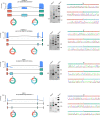




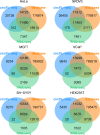
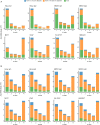
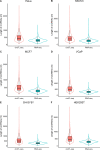
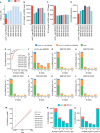



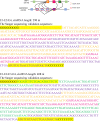
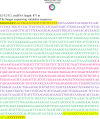

Similar articles
-
circFL-seq, A Full-length circRNA Sequencing Method.Bio Protoc. 2022 Apr 20;12(8):e4384. doi: 10.21769/BioProtoc.4384. eCollection 2022 Apr 20. Bio Protoc. 2022. PMID: 35800097 Free PMC article.
-
Full-length circular RNA profiling by nanopore sequencing with CIRI-long.Nat Protoc. 2023 Jun;18(6):1795-1813. doi: 10.1038/s41596-023-00815-w. Epub 2023 Apr 12. Nat Protoc. 2023. PMID: 37045995 Review.
-
Comprehensive profiling of circular RNAs with nanopore sequencing and CIRI-long.Nat Biotechnol. 2021 Jul;39(7):836-845. doi: 10.1038/s41587-021-00842-6. Epub 2021 Mar 11. Nat Biotechnol. 2021. PMID: 33707777
-
isoCirc catalogs full-length circular RNA isoforms in human transcriptomes.Nat Commun. 2021 Jan 12;12(1):266. doi: 10.1038/s41467-020-20459-8. Nat Commun. 2021. PMID: 33436621 Free PMC article.
-
Nanopore long-read sequencing of circRNAs.Methods. 2021 Dec;196:23-29. doi: 10.1016/j.ymeth.2021.09.010. Epub 2021 Sep 24. Methods. 2021. PMID: 34571139 Review.
Cited by
-
Unveiling Pharmacogenomics Insights into Circular RNAs: Toward Precision Medicine in Cancer Therapy.Biomolecules. 2025 Apr 5;15(4):535. doi: 10.3390/biom15040535. Biomolecules. 2025. PMID: 40305280 Free PMC article. Review.
-
Emerging Roles of Circular RNAs in Vascular Smooth Muscle Cell Dysfunction.Front Genet. 2022 Jan 19;12:749296. doi: 10.3389/fgene.2021.749296. eCollection 2021. Front Genet. 2022. PMID: 35126447 Free PMC article. Review.
-
Circular RNA and Its Roles in the Occurrence, Development, Diagnosis of Cancer.Front Oncol. 2022 Apr 7;12:845703. doi: 10.3389/fonc.2022.845703. eCollection 2022. Front Oncol. 2022. PMID: 35463362 Free PMC article. Review.
-
Architects and Partners: The Dual Roles of Non-coding RNAs in Gene Fusion Events.Methods Mol Biol. 2025;2883:231-255. doi: 10.1007/978-1-0716-4290-0_10. Methods Mol Biol. 2025. PMID: 39702711
-
Recent advances in cancer fusion transcript detection.Brief Bioinform. 2023 Jan 19;24(1):bbac519. doi: 10.1093/bib/bbac519. Brief Bioinform. 2023. PMID: 36527429 Free PMC article. Review.
References
Publication types
MeSH terms
Substances
Associated data
LinkOut - more resources
Full Text Sources
Other Literature Sources

